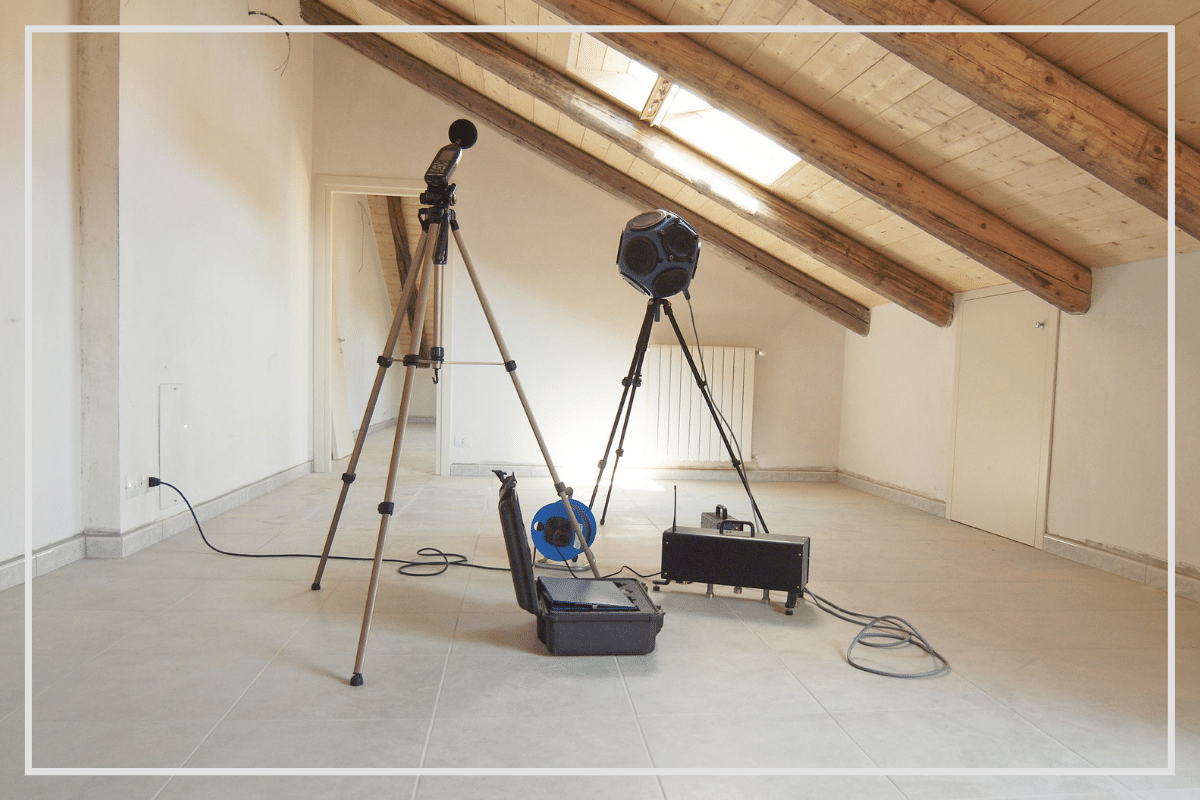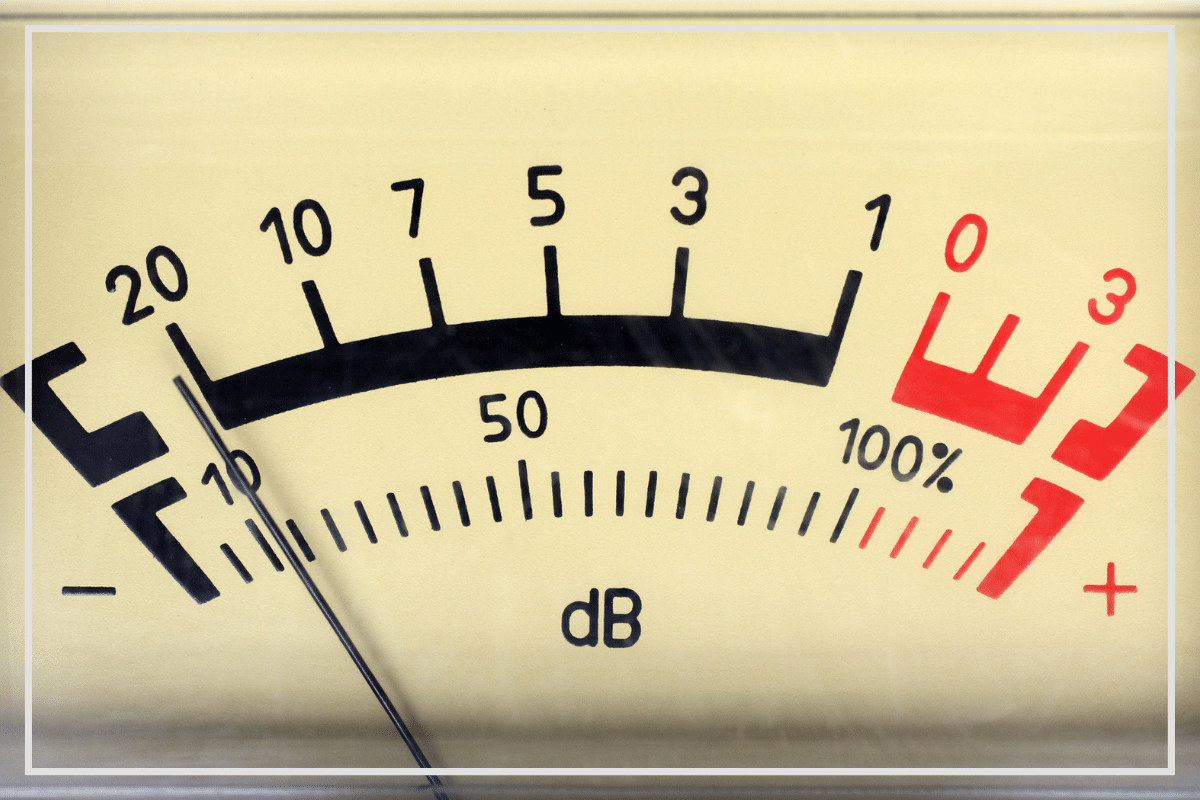- What Is A Decibel Meter
- Why Use The Tool
- Sound Level Meter Function
3.1 Community Noise Analysis
3.2 Building Acoustics
3.3 Industrial Noise Control
3.4 Machinery Noise Analysis - Different Types Of Devices
4.1 Type 1 / Class 1
4.2 Type 2 / Class 2 - How To Use A Sound Level Meter
5.1 Indoors
5.2 Outdoors - How Much Does A Decibel Meter Cost
- Why Try Decibelpro.App
7.1 Cost Efficiency
7.2 Best Noise Dosimeter
7.3 Spectrum Analysis
Have you ever wondered what a sound level meter is? You are not alone. This sound measurement instrument is gaining popularity and has many people asking what it’s for and how to use a sound level meter.
In this article, we’re going to shed light on what a decibel meter is and how to properly use it.
What Is a Decibel Meter?
A decibel meter is a sound pressure measuring instrument for standardized measurements that uses the decibel scale. For this reason, the decibel meter is also known as a sound pressure level (SPL) meter. Other common names include noise meter and sound level meter.
A decibel meter uses a microphone to capture sound. The mic captures sound pressure deviations and converts them into an electrical signal that is made stronger by a preamplifier. The decibel meter then uses signal processing to apply frequency and time weightings to the signal according to international standards.
A decibel meter responds to sound much like a human ear to give objective acoustic measurements of noise levels in a certain environment.
These measured noise levels are expressed in decibels (dB) and displayed on the instrument’s screen. Some decibel meters also show additional acoustic parameters such as the equivalent continuous sound level (Leq).
Decibel meters are usually portable and run on batteries. However, in certain cases, sound level meters used for continuous monitoring of noise levels in a particular environment can be permanently installed.
Decibel meters are used for measuring environmental, industrial, or machine noise levels. They are typically used by safety professionals to monitor conditions and the observance of recommended exposure limits (RELs).
Why Use the Tool?
Sound level meters are useful for measuring, monitoring, and controlling noise levels. They are utilized in multiple scenarios in factories and other industrial plants and on construction sites. They are also used in urban environments to monitor noise levels from car, rail, and air traffic, public events, and other sources of sound.
Sound level meters are typically used by regulatory authorities and workplace safety specialists to make sure noise levels are kept under recommended reference levels. This way, they protect the people who are exposed to high levels of noise. This includes workers, city dwellers, and the general population.
Sound level meters can also be used in other environments such as for setting up audio equipment at concerts or for personal reasons. For instance, you can use a sound level meter in your home or workplace to avoid exposure to dangerous noise levels. Or, to measure sound pressure levels when calibrating audio equipment.
Sound Level Meter Function
Sound level meters are used in several types of scenarios where measurement and monitoring of noise levels are necessary. They have the general purpose of measuring noise, but their main role depends on what environment they are used in.
Here are a few examples of sound level meter functions:
Community Noise Analysis
Sound level meters are often used for measuring community or environmental noise. The main reason for measuring noise levels in residential or urban environments is to keep the general population safe from exposure to dangerous noise levels. In other cases, community noise can be measured for settling disputes between neighbors.
Community noise is more difficult to define and measure because several sources of noise can affect measurements. Community noise is usually a combination of different sources like car traffic, construction sites, playgrounds, etc. Some sources are continuous while others can be less frequent.
In general, public authorities have specific regulations in place for industrial, construction, and residential environments. These regulations also usually differ depending on the time of day.
For measuring community noise as accurately as possible, separate measurements need to be carried out during the day and the night. In addition, they should be carried out over a longer period to determine the average and highest peak of noise.
Building Acoustics
Sound level meters are also used for measuring building or architectural acoustics. The goal of these measurements is to determine room acoustics, reverberation, transmission loss, or sound absorption. Or, to test acoustic material and sound insulation.
Noise measurements in building acoustics are used for evaluating compliance with building codes. They evaluate how noise travels from the outside in or from room to room. These measurements are also useful to designers when they want to implement and test sound insulation materials and solutions.
For room acoustics, measurements are used in determining how sound is created, propagated, absorbed, or reverberated. Understanding how sound travels and how it reacts to the environment is crucial for blocking unwanted sounds and creating the best experience for the users/audience.
Some scenarios include:
- homes
- restaurants
- offices
- lecture rooms
- auditoriums
- concert halls

Industrial Noise Control
Industrial environments are probably the ones where sound level meters are used most frequently. Decibel meters are used for precise on-the-spot measurements and long-term monitoring of different industrial and construction noise.
Specialists called Industrial Hygienists and Workplace Safety Professionals use decibel meters to assess workplace noise exposure. They conduct regular noise surveys and gather noise level data. Using noise level measurements, they can implement safety procedures and measures to keep employees safe from hearing damage/hearing loss.
Machinery Noise Analysis
Another function of sound level meters relates to product noise testing. These instruments are used for measuring noise produced by machinery in the industries such as:
- automotive
- appliance manufacturing
- firearms manufacturing
- energy
- agriculture
The main goal is to gather and analyze sound-level data that can help manufacturers develop quieter products.
Different Types of Devices
Sound level meters are divided into two types of classes. Each type defines a decibel meter’s accuracy under the American National Standards Institute (ANSI) guidelines. Each class defines the meter’s accuracy under the International Electrotechnical Commission (IEC) standards.
Type 1/ Class 1
Type 1/Class 1 sound level meters are used for precision-grade assessments. They are most often used in laboratory testing.
Type 2/ Class 2
Type 2/Class 2 sound level meters are less complex. They are generally used for noise level assessments in industrial, educational, commercial, or residential scenarios.
How to Use a Sound Level Meter
It’s important to properly know how to use a sound level meter to obtain usable results.
General guidelines on how to use a sound level meter:
- place the sound level meter at a sufficient distance from any obstacles or reflectors
- place the microphone of the sound level meter about 1,3 - 1,5 m above the ground
- place the microphone of the sound level meter in the direction of the sound source
The measurements of a decibel meter will be affected by several elements such as the environment and different sound sources. For this reason, you should keep a record of the measurement conditions like:
- type of sound level meter
- number and duration of measurements
- measurement location
- time of day
- weather conditions (if outdoors)
- description of sound sources
Measurements will also depend on your distance from the source. Read more about that here.
Below you can find instructions on how to use a sound level meter indoors and outdoors.
Indoors
Here is how to properly use a sound level meter indoors:
- eliminate any obstacles standing between the sound level meter microphone and the sound source
- place the mic in the direction of the sound source
Outdoors
Here is how to properly use a sound level meter outside:
- if possible, take measurements in dry weather
- document the weather conditions writing down wind direction and speed, temperature, humidity, etc.
- if wind speeds exceed 5m/s, you should consider using wind protection
How Much Does a Decibel Meter Cost?
A hand-held sound level meter price depends on its class or type.
Class 2 decibel meters cost between $150 and $3500.
Class 1 decibel meters cost between $800 and $4000.
Why Try Decibelpro.App
A sound level meter app is a great way to monitor noise levels and measure sound. It is convenient and easy to use and eliminates the need to purchase a special instrument for sound measurement.
All you need is a smartphone and Decibel Pro.
Cost Efficiency
First and foremost, using Decibel Pro to measure noise is very cost-efficient. Instead of paying hundreds of dollars for a sound level meter, you can download and use Decibel Pro at very convenient rates.
The monthly subscription cost is $9.99, the yearly subscription is $24.99, and the lifetime access cost is $49.99. Way lower than any sound level meter on the market!
Best Noise Dosimeter Accuracy
Noise dosimeters are personal noise measurement instruments with sensors worn by persons who are exposed to high levels of noise.
Decibel Pro comes with a noise dosimeter feature that can help you monitor the noise levels you are exposed to each day in real-time. It is pre-calibrated with high-quality equipment to provide the best accuracy. Plus, it includes OSHA and NIOSH standards you can analyze your daily exposure by.
Spectrum Analysis
Decibel Pro also includes a full spectrum analysis feature that you can use to adjust the input sound and find the right balance between different parameters to produce better-quality sounds and tracks.
The app uses different filters to measure and analyze amplitude and frequency. Then, it displays results the results on an intuitive data graph, with the amplitude on the y-axis (in decibels) and frequency on the x-axis (in Hertz). Low to high frequencies are displayed left to right.
A spectrum analyzer is a useful tool for music production, sound mixing, and mastering.
To learn more about the Decibel app, click here.



